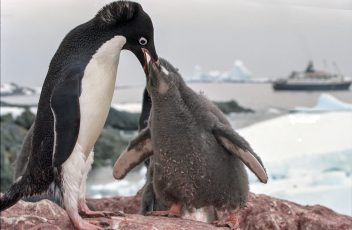It’s amazing what you can discover about a penguin when you rummage through its waste, finds Claire Ainsworth
AS EUREKA moments go, it wasn’t the most dignified. David Lambert lost his footing and face-planted into a patch of expired penguins. He had been taking blood samples from living birds at a nesting site, but as he scrambled to his feet, it dawned on him that he was standing on a mass grave. “In those penguin colonies you are literally walking on matted bodies,” he says. “When you scratch around, you just find bones after bones after bones.”
Lambert’s insight was to realise that he had stumbled on a deep-frozen archive. The remains belonged to Adélie penguins, which return to the same spots to nest year after year, often for centuries. And this was Antarctica, the coldest, driest place on the planet, offering the ideal conditions for preserving DNA. By digging into this repository, he could unearth the story of Adélies and their evolution.
That’s not all. This frozen treasure trove has the potential to give new insights into the past, present and future of the Antarctic, too. This promise is what’s drawing scientists like Lambert to the bottom of the world, braving seat-of-your-pants helicopter rides and vicious polar storms to sift through layers of mummified penguin bodies and reeking semi-fossilised bird faeces. And what they are finding has exceeded expectations. The preserved Adélie remains are providing clues about past climate conditions, changes in ice shelves and sea ice, the impact of historical human activities such as whaling, and even the mechanism of evolution itself. Not bad for a short, stout bird with a reputation for belligerent curiosity.
Image: Jerzy Strzelecki [CC BY 3.0 (https://creativecommons.org/licenses/by/3.0)]
